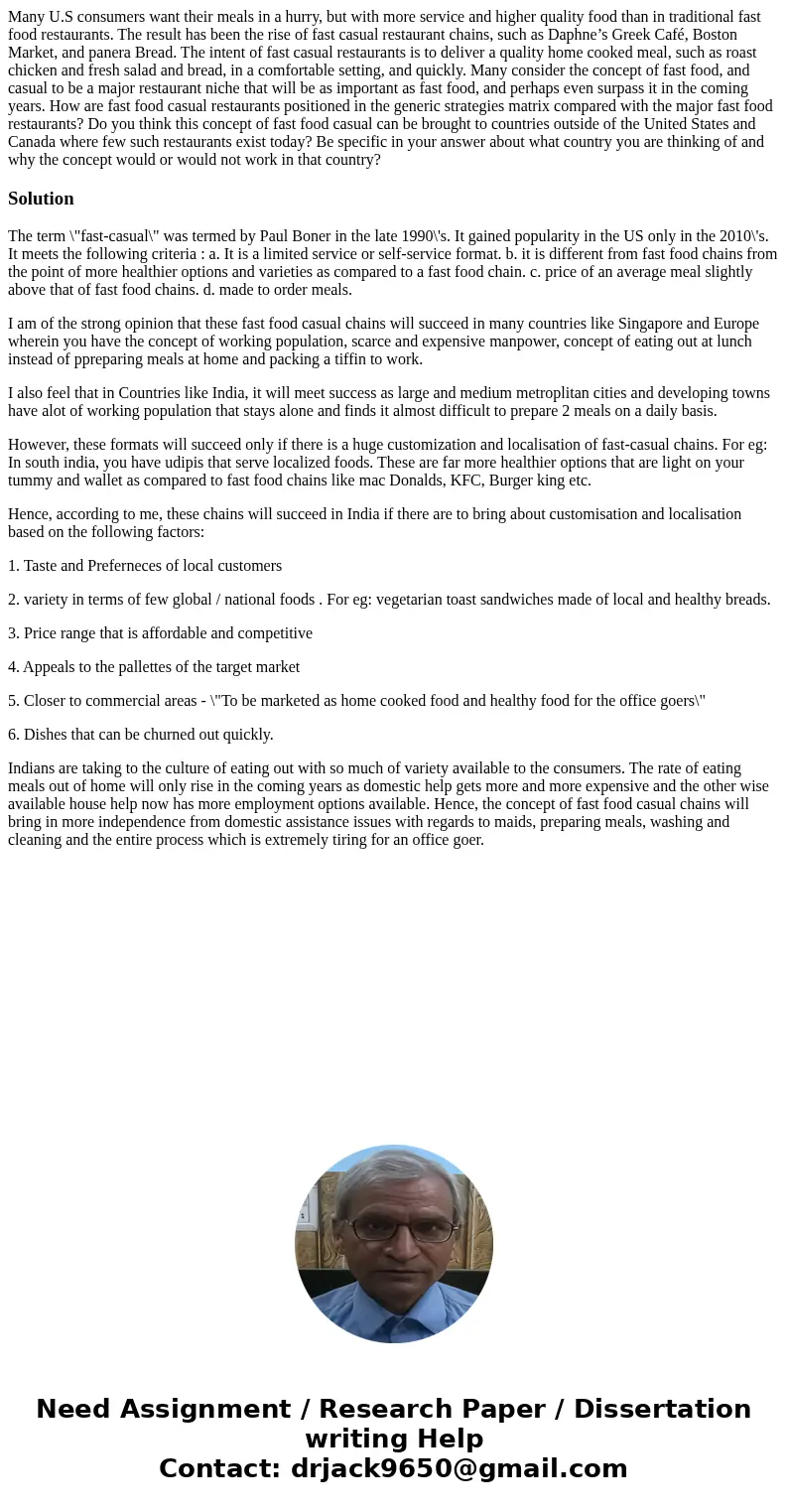Many US consumers want their meals in a hurry but with more
Many U.S consumers want their meals in a hurry, but with more service and higher quality food than in traditional fast food restaurants. The result has been the rise of fast casual restaurant chains, such as Daphne’s Greek Café, Boston Market, and panera Bread. The intent of fast casual restaurants is to deliver a quality home cooked meal, such as roast chicken and fresh salad and bread, in a comfortable setting, and quickly. Many consider the concept of fast food, and casual to be a major restaurant niche that will be as important as fast food, and perhaps even surpass it in the coming years. How are fast food casual restaurants positioned in the generic strategies matrix compared with the major fast food restaurants? Do you think this concept of fast food casual can be brought to countries outside of the United States and Canada where few such restaurants exist today? Be specific in your answer about what country you are thinking of and why the concept would or would not work in that country?
Solution
The term \"fast-casual\" was termed by Paul Boner in the late 1990\'s. It gained popularity in the US only in the 2010\'s. It meets the following criteria : a. It is a limited service or self-service format. b. it is different from fast food chains from the point of more healthier options and varieties as compared to a fast food chain. c. price of an average meal slightly above that of fast food chains. d. made to order meals.
I am of the strong opinion that these fast food casual chains will succeed in many countries like Singapore and Europe wherein you have the concept of working population, scarce and expensive manpower, concept of eating out at lunch instead of ppreparing meals at home and packing a tiffin to work.
I also feel that in Countries like India, it will meet success as large and medium metroplitan cities and developing towns have alot of working population that stays alone and finds it almost difficult to prepare 2 meals on a daily basis.
However, these formats will succeed only if there is a huge customization and localisation of fast-casual chains. For eg: In south india, you have udipis that serve localized foods. These are far more healthier options that are light on your tummy and wallet as compared to fast food chains like mac Donalds, KFC, Burger king etc.
Hence, according to me, these chains will succeed in India if there are to bring about customisation and localisation based on the following factors:
1. Taste and Preferneces of local customers
2. variety in terms of few global / national foods . For eg: vegetarian toast sandwiches made of local and healthy breads.
3. Price range that is affordable and competitive
4. Appeals to the pallettes of the target market
5. Closer to commercial areas - \"To be marketed as home cooked food and healthy food for the office goers\"
6. Dishes that can be churned out quickly.
Indians are taking to the culture of eating out with so much of variety available to the consumers. The rate of eating meals out of home will only rise in the coming years as domestic help gets more and more expensive and the other wise available house help now has more employment options available. Hence, the concept of fast food casual chains will bring in more independence from domestic assistance issues with regards to maids, preparing meals, washing and cleaning and the entire process which is extremely tiring for an office goer.

 Homework Sourse
Homework Sourse